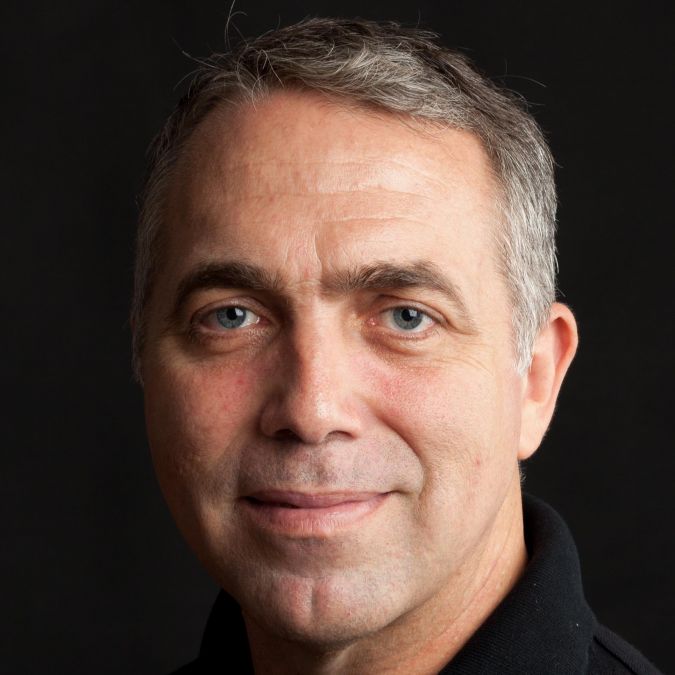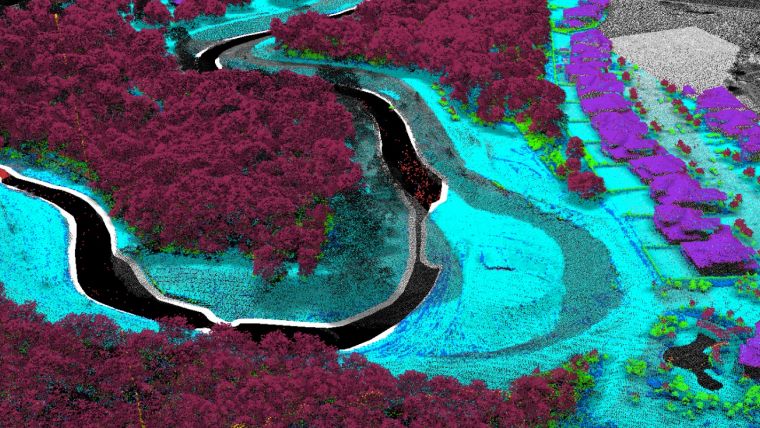Towards a Broader Use of Hydrospatial Data
In this edition of our Q&A series with leading experts from the hydrographic industry, Paul Seaton of Fugro shares his thoughts on a variety of topics, such as key market trends, technology drivers and challenges, and the impacts of COVID-19 and climate change on the sector.
What has been the impact of COVID-19 on your business?
The early impact of COVID-19 was complex for the communities and global markets in which we live and operate. Our priority was to ensure the health and well-being of our colleagues and clients. The pandemic and subsequent closed borders required us to stop all non-essential travel and embrace remote working. There was a widespread impact on projects across the world as clients reviewed their plans and the impact that it would have on their own operations. This meant we had to review how we were structured and operated. Despite these challenges, our teams responded well and we were able to continue many of our operations.
Many of the investment and innovation programmes that we had worked on prior to the pandemic became even more important in this new challenging environment. We had been reducing our footprint in the field and working on delivering projects remotely for some time. Our first autonomous vessels were being introduced and new airborne-based systems such as the rapid airborne multibeam mapping system (RAMMS) and the enhanced laser airborne depth sounder (LADS) HD+ were being introduced, with reduced teams in the field.
Remote systems and technologies had been developed prior to the pandemic and allowed us to acquire and transfer data from vessels and aircraft straight to the cloud for data processing. We had also been working on cloud-based artificial intelligence and machine learning applications to complement our processing and increase the consistency, quality and speed of data delivery. Through dedicated online platforms, clients were able to access project data in near real time, which enabled quick decision-making. Remote solutions allowed our teams to work from almost anywhere around the world and continue to work on projects and deliver high-quality geodata to our clients when needed.
What do you consider the key market trend in the coming years?
The markets that we are engaged in are changing with an ever-increasing need for accurate geo and hydrospatial data. We will continue to see an acceleration in the energy transition, the need for sustainable infrastructure and climate change adaption. Hydrography has a key role in all these trends. Offshore renewable energy will be essential to meet the world’s increasing energy needs and reduce carbon emissions. These offshore energy developments require accurate information on the seafloor and a broad range of other marine site characterization analysis.
As the world’s population is rapidly growing and becoming increasingly urbanized, we are seeing an increased need for all communities, particularly those in coastal environments, to invest in sustainable infrastructure and the need for more geodata across the land-sea interface.
The traditional importance of hydrography to support the safety of navigation for trade, transport, tourism and industries such as fishing is also on the increase. This includes a growing demand for subsea telecommunication cables that are now the backbone to the global economy.
Which technological driver do you consider most important in the coming years?
With an increasing need for geodata, we will see major changes in how it is acquired and analysed and how insights are shared. Fugro is pioneering the introduction of remote and autonomous vessels to enable hydrographic and geophysical surveys and remote inspection services to take place with a reduced project footprint. These will also be faster than conventional methods and safer, as operational teams are now working onshore from remote operations centres (ROCs). With secure satellite or point-to-point communications, we are able to obtain and process data in near real time using a combination of machine learning and artificial intelligence.
This transformation in the maritime industry is allowing for a more diverse workforce, which is bringing new insights into the world of hydrography and benefits our stakeholders.
What do you see as the main challenge in the coming years?
The global demand for geodata is increasing. From the hydrographic industry’s perspective, we will be required to collect and analyse ever-increasing quantities of data to be able to provide the advice needed by a broad range of stakeholders to contribute to a safe and liveable world. We will need to continue to invest in innovations such as autonomous vessels, remote sensors such as airborne Lidar bathymetry (ALB) and RAMMS systems. We will need to increase the use of cloud-based machine learning and artificial intelligence to keep up with the exponential increase in datasets collected per project.
We need to be open to the broader use of hydrospatial data. No longer will the focus only be on the safety of navigation but also on the wider need for information to manage marine and coastal environments.
The biggest challenge that we will all face in the coming years will be ensuring that there are sufficiently trained and qualified people to meet the challenge. We will need a new generation of well trained and committed professionals to embrace the new remote way of working and collaborating, to deliver the insights our clients need. This will also have to include our stakeholders, so that they are able to interpret and use the information that is provided. Public and private partnerships and the engagement of communities will be key to us meeting this challenge.
The climate crisis urges companies to contribute to a safer and more sustainable world. What is your vision on this?
Fugro’s vision is that we contribute daily towards a safe and liveable world. The climate crisis, which comes at a time when we are seeing increasing population growth, urbanization and demand for energy and natural resources, makes the task of finding sustainable solutions more important than ever. The commitment of the Fugro team to contribute to this vision and to help meet the sustainable development challenge is very encouraging.
Throughout our business, we are seeing our colleagues work together to integrate social, economic and environmental considerations into all aspects of the decision-making process. We have set net zero targets for our operations by 2035 and are on track to meet or exceed these. Embracing low-carbon emission solutions for data collection and increasing the ability to analyse and deliver advice is making a real difference. We are increasingly collaborating with communities and the public sector to deliver these solutions to broader stakeholders. Our workforce is becoming more diversified and increasingly innovative. This is also attracting new and increasingly engaged talent to our teams who want to play a role in meeting the climate challenge, and that is inspiring.
About Paul Seaton
Paul Seaton is regional director for strategic sales and marketing (Asia Pacific) for Fugro, a leading geodata company primarily serving the energy and infrastructure industries. With a strong focus on sustainable development, Paul focuses on commercializing remote sensing innovation and harnessing geodata expertise to contribute to a safe and liveable world. Paul has extensive experience with government-funded projects and has represented government at a diplomatic level and as a trade and investment facilitator and a lobbyist. He promotes all of Fugro’s carbon-reducing innovations, particularly in hydrography and coastal resilience projects. He leads Fugro’s contribution to the GEBCO Seabed 2030 initiative in the Asia Pacific region.


Value staying current with hydrography?
Stay on the map with our expertly curated newsletters.
We provide educational insights, industry updates, and inspiring stories from the world of hydrography to help you learn, grow, and navigate your field with confidence. Don't miss out - subscribe today and ensure you're always informed, educated, and inspired by the latest in hydrographic technology and research.
Choose your newsletter(s)
























